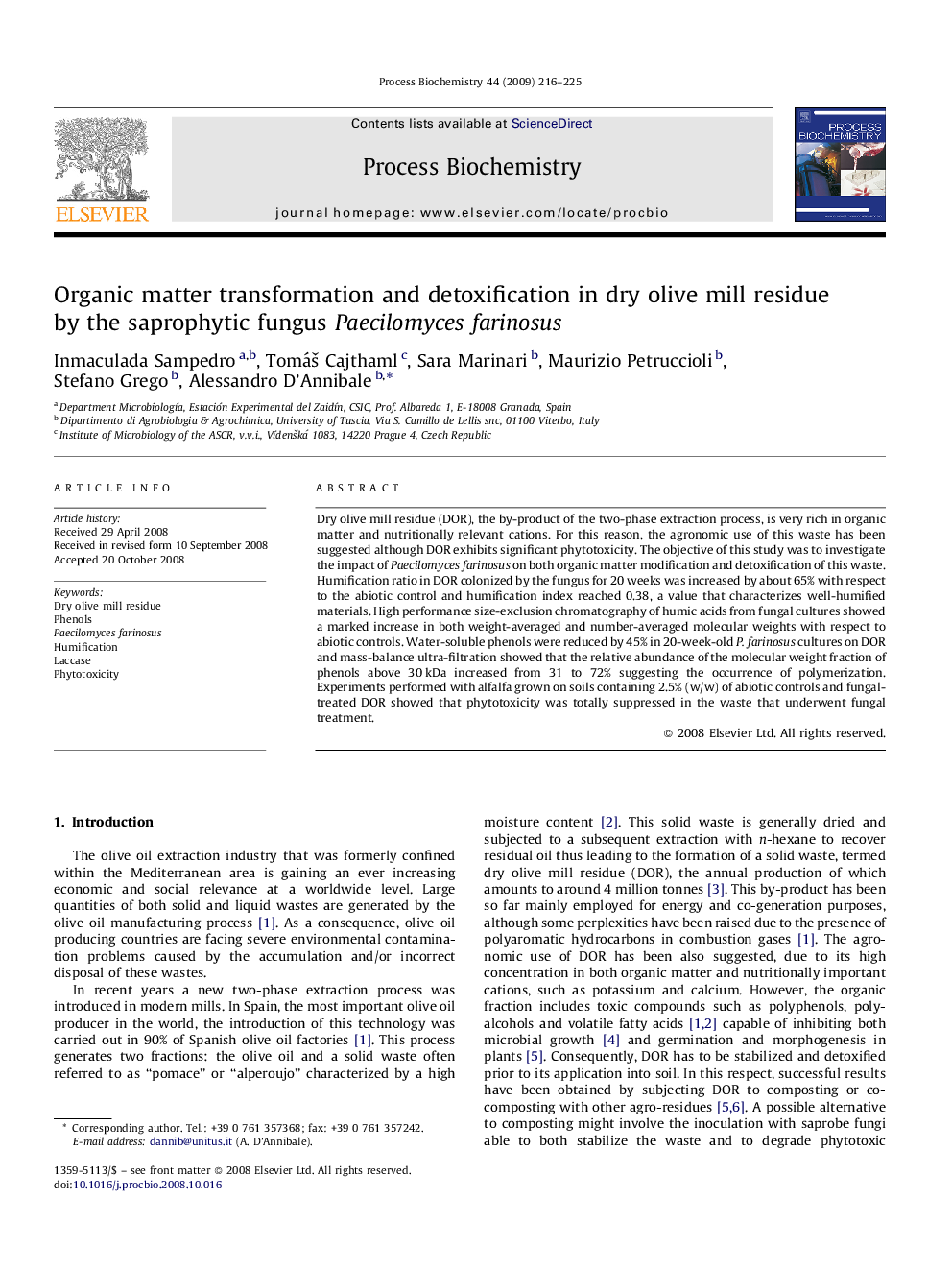| Article ID | Journal | Published Year | Pages | File Type |
|---|---|---|---|---|
| 35236 | Process Biochemistry | 2009 | 10 Pages |
Dry olive mill residue (DOR), the by-product of the two-phase extraction process, is very rich in organic matter and nutritionally relevant cations. For this reason, the agronomic use of this waste has been suggested although DOR exhibits significant phytotoxicity. The objective of this study was to investigate the impact of Paecilomyces farinosus on both organic matter modification and detoxification of this waste. Humification ratio in DOR colonized by the fungus for 20 weeks was increased by about 65% with respect to the abiotic control and humification index reached 0.38, a value that characterizes well-humified materials. High performance size-exclusion chromatography of humic acids from fungal cultures showed a marked increase in both weight-averaged and number-averaged molecular weights with respect to abiotic controls. Water-soluble phenols were reduced by 45% in 20-week-old P. farinosus cultures on DOR and mass-balance ultra-filtration showed that the relative abundance of the molecular weight fraction of phenols above 30 kDa increased from 31 to 72% suggesting the occurrence of polymerization. Experiments performed with alfalfa grown on soils containing 2.5% (w/w) of abiotic controls and fungal-treated DOR showed that phytotoxicity was totally suppressed in the waste that underwent fungal treatment.
